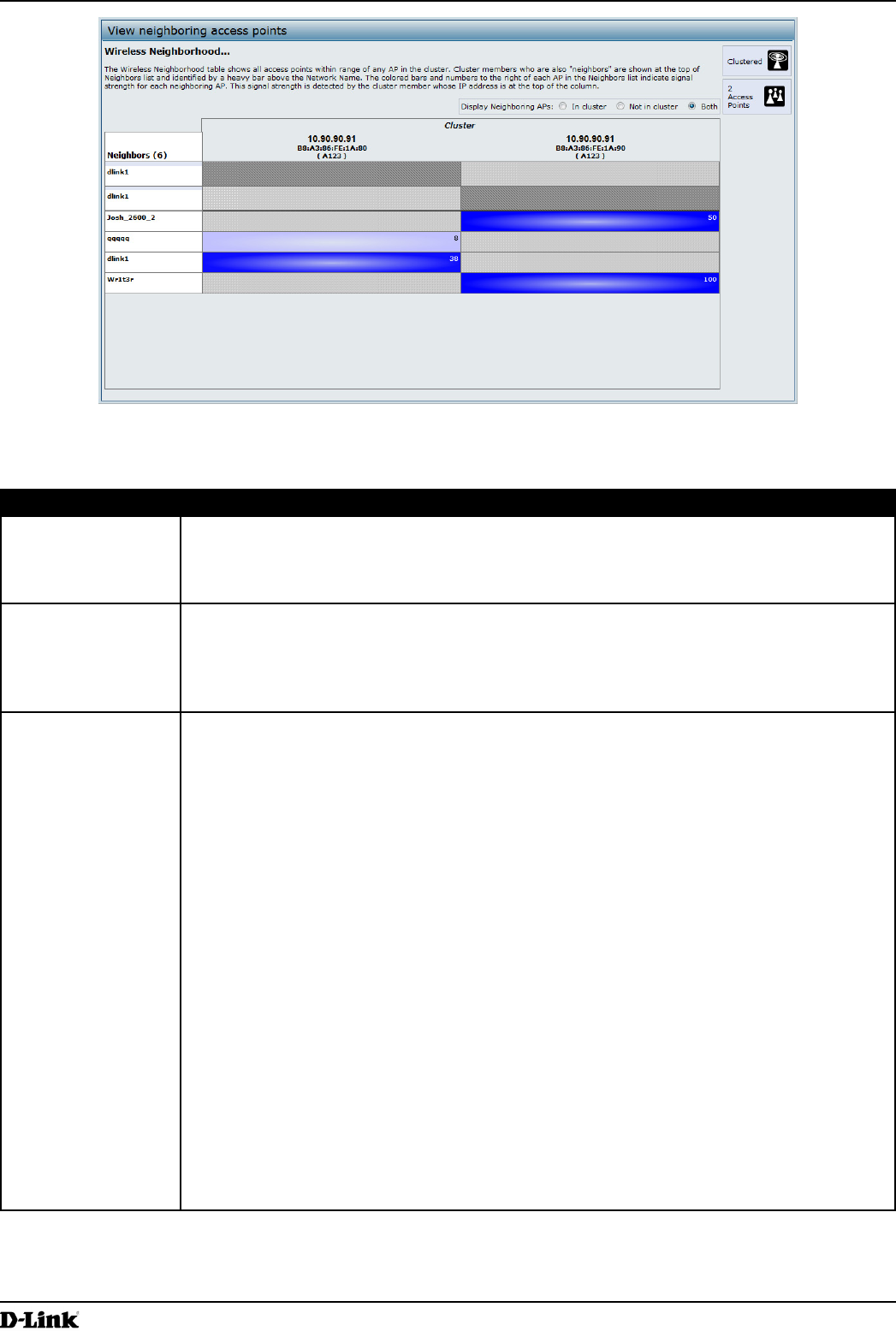
Unied Access Point Administrator’s Guide
Unied Access Point Administrator’s Guide
Page 111
March 2012
Section 9 - Clustering Multiple APs
Figure 67 - View Neighboring Access Points
The following table describes details about the Wireless Neighborhood information.
Field Description
Display neighboring
APs
Click one of the following radio buttons to change the view:
•) In cluster — Shows only neighbor APs that are members of the cluster
•) Not in cluster — Shows only neighbor APs that are not cluster members
•) Both — Shows all neighbor APs (cluster members and non-members)
Cluster The Cluster list at the top of the table shows IP addresses for all access points in the cluster.
(This is the same list of cluster members shown on the Cluster > Access Points tab.)
If there is only one AP in the cluster, only a single IP address column will be displayed here;
indicating that the AP is clustered with itself.
You can click on an IP address to view more details on a particular AP.
Neighbors Access points which are neighbors of one or more of the clustered APs are listed in the left
column by SSID (Network Name).
An access point which is detected as a neighbor of a cluster member can also be a cluster
member itself. Neighbors who are also cluster members are always shown at the top of the
list with a heavy bar above and include a location indicator.
The colored bars to the right of each AP in the Neighbors list shows the signal strength for
each of the neighbor APs as detected by the cluster member whose IP address is shown at
the top of the column.
The color of the bar indicates the signal strength:
•) Dark Blue Bar — A dark blue bar and a high signal strength number (for example 50)
indicates good signal strength detected from the Neighbor seen by the AP whose IP
address is listed above that column.
•) Lighter Blue Bar — A lighter blue bar and a lower signal strength number (for example
20 or lower) indicates medium or weak signal strength from the Neighbor seen by the
AP whose IP address is listed above that column
•) White Bar — A white bar and the number 0 indicates that a neighboring AP that was
detected by one of the cluster members cannot be detected by the AP whose IP
address if listed above that column.
•) Light Gray Bar — A light gray bar and no signal strength number indicates a Neighbor
that is detected by other cluster members but not by the AP whose IP address is listed
above that column.
•) Dark Gray Bar — A dark gray bar and no signal strength number indicates this is the
AP whose IP address is listed above that column (since it is not applicable to show
how well the AP can detect itself).
Table 64 - Wireless Neighborhood Information


















